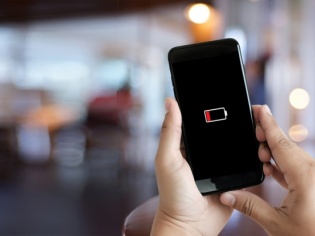-
Rohan Parekh
22nd Sep 2021
Your life will be much better if you always assume that your phone’s battery is about to run out. That way you'll always carry your charger or battery pack no matter where you are, even the washroom, because you never know when your battery is going to go down the drain.
Remember the good old days with your Nokia 3310? Now that Nokia brick may not have been a smartphone, and it may not have had any brains, but it had enough brawn to survive multiple days without being charged.
Too bad there is no equivalent to Moore’s Law when it comes to battery life. (Moore’s Law is a projection that the speed and capabilities of our electronics increases exponentially every two years).
The growth of microprocessors may be exponential but when it comes to battery life, there seems to be exponential decay. We can cram more and more transistors in a microchip every two years, which improves the speed and capabilities of our electronics, but there have been deep cuts to the life span of a battery. Phones today are consuming more power because they are buried under an avalanche of apps. Battery storage technology is simply not progressing at the same rate.
But Moore’s Law isn’t going to last forever. Initially the doubling rate of transistors in microchips was every two years but now the rate has slowed to every three years. Gordon Moore himself admitted that computer materials being made of atoms is a fundamental limitation. There is a physical limitation for a transistor as it shrinks to the size of an element. You can’t make something smaller than an atom. At least not yet.
It’s certainly remarkable that we can squeeze millions of times more transistors in a microchip than we could in the 1960s, but quite unremarkable when your phone dies just as you’re about to get a new high score for a trending mobile game.
But even if you’re not a gamer, the fact remains that smartphones have disappointing battery life. One study revealed that average usage of smartphones by Indians shot up by 25% to almost 7 hours a day. We are increasingly relying on phones for work, study and entertainment, but are unable to rely on batteries.
Today’s batteries are made from lithium cobalt and we’ve been using that same material since the 1990s. We’ve reached the limit on how much power we can squeeze out of lithium cobalt, so our only option is to find new materials to build longer lasting batteries.
Finding new materials to improve technology is more challenging than figuring out how to use existing materials to improve technology. The latter is sometimes referred to as engineering advances. The good news is that we are making some progress in finding those new materials.
Cobalt is said to be the least abundant and most expensive component in batteries, and researchers from the University of Texas are currently working to develop a battery that uses nickel instead of cobalt. Almost 90% of the battery is made of nickel with manganese and aluminum filling in the rest. Batteries can store more energy with nickel. That increased energy density can lead to longer battery life for smartphones and other electronics as well, like electric vehicles.
Given that most of us are fed-up with charging our phones at least two times a day, maybe the solution is to have two phones – one for apps and one for calls! Either way, until we find new materials to improve battery storage technology, we’ll simply have to put up with charging our phones at least two times a day.
The smarter the phone, the lower the battery life | TechTree.com
The smarter the phone, the lower the battery life
Your life will be much better if you always assume that your phone’s battery is about to run out. Remember the good old days with your Nokia 3310? Now that Nokia brick may not have been a smartphone, and it may not have had any brains, but it had enough brawn to survive multiple days without being charged.
News Corner
- DRIFE Begins Operations in Namma Bengaluru
- Sevenaire launches ‘NEPTUNE’ – 24W Portable Speaker with RGB LED Lights
- Inbase launches ‘Urban Q1 Pro’ TWS Earbuds with Smart Touch control in India
- Airtel announces Rs 6000 cashback on purchase of smartphones from leading brands
- 78% of Indians are saving to spend during the festive season and 72% will splurge on gadgets & electronics
- 5 Tips For Buying A TV This Festive Season
- Facebook launches its largest creator education program in India
- 5 educational tech toys for young and aspiring engineers
- Mid-range smartphones emerge as customer favourites this festive season, reveals Amazon survey
- COLORFUL Launches Onebot M24A1 AIO PC for Professionals







TECHTREE